The Rise of Mega Studios: How MGM Remade Hollywood 100 Years Ago

“More stars than there are in heaven” was once the slogan for Hollywood’s largest studio. Larger-than-life celebrities like Judy Garland, Clark Gable, Fred Astaire, Katharine Hepburn, Jean Harlow and Gene Kelly were common fixtures at MGM. Today, MGM is an IP outpost purchased by Amazon for $8.5 billion in 2022, but in its day, Metro-Goldwyn-Mayer had the biggest lot in Hollywood and produced some of the most extravagant films. Located in Culver City, MGM’s famously sprawling lot began as it grew from the 40 acres owned by Samuel Goldwyn. The legendary MGM property was 3 miles long and housed more than 45 buildings and 14 stages, in addition to numerous outdoor sets that would be built over the years.
MGM was home to countless classic films, and in 1939 alone, the studio backed the timeless fantasy The Wizard of Oz and distributed the Oscar-winning Gone With the Wind, the Ernst Lubitsch/Greta Garbo comedy Ninotchka, and the Judy Garland/Mickey Rooney vehicle Babes in Arms. Before investor Kirk Kerkorian purchased the company and later dismantled the lot, destroying beloved history in the process, the property was home to many of the greatest stars and films ever created. Some of the most famous musicals were films as part of Arthur Freed production unit, like Meet Me in St. Louis (1944), An American in Paris (1951), Singin’ in the Rain (1952) and Gigi (1958). Of course, most moviegoers know the MGM lion that was the company’s logo for most of its life.
More from The Hollywood Reporter
For Francis Ford Coppola's Go-for-Broke Movies, All Roads Lead to Cannes
Oscars Big Snub? 'Casablanca' Win Marked Boiling Point at Warner Bros.
The Ruthless Rise and Fall of Paramount Pictures During Hollywood's Golden Age


MGM began in April 1924 as Metro Goldwyn productions. The company was born out a merger of Goldwyn Pictures, Louis B. Mayer productions and Metro Pictures. The organization was headed by Marcus Loew, one of the industry pioneers in New York City who shifted from stage production to movie exhibition at the turn of the century. The company name soon shifted to add Mayer to highlight their head of production, a position he would hold until his ouster in 1951.
Also coming along for the ride was “boy genius” producer Irving Thalberg, who was poached from Universal by Mayer in 1923 (Thalberg would be the focus of F. Scott Fitzgerald’s unfinished novel The Last Tycoon, as well as film and TV adaptations of the same story). At the time, The New York Times reported the MGM merger also included Cosmopolitan pictures, important for its founder, publishing magnate William Randolph Hearst, who created the company for his mistress Marion Davies. Not only was MGM consolidating and maximizing labor forces, but it was getting in bed with the most feared newspaper man of the era.
To offer some perspective on the industry in 1924, the Hollywood Sign was only 2 years old and still operating as a land advertisement selling development space in Beachwood Canyon. There were about 50 different production companies, nearly 30,000 people already employed by the industry, the total cost of movie production was growing above $156 million a year. Hollywood, as a place, was referred to as the “Sodom of the Twentieth Century” but also as the “Paris of America.” Home to a range of religious movements, Hollywood locals often called their hometown the “City of Churches.” Hollywood then, much like today, was a locale with many personalities. A perfect place to build an entertainment empire where MGM could lead from the top. Universal and Paramount were making waves. United Artists was christened in 1919. Warner Bros. and Disney incorporated in 1923.
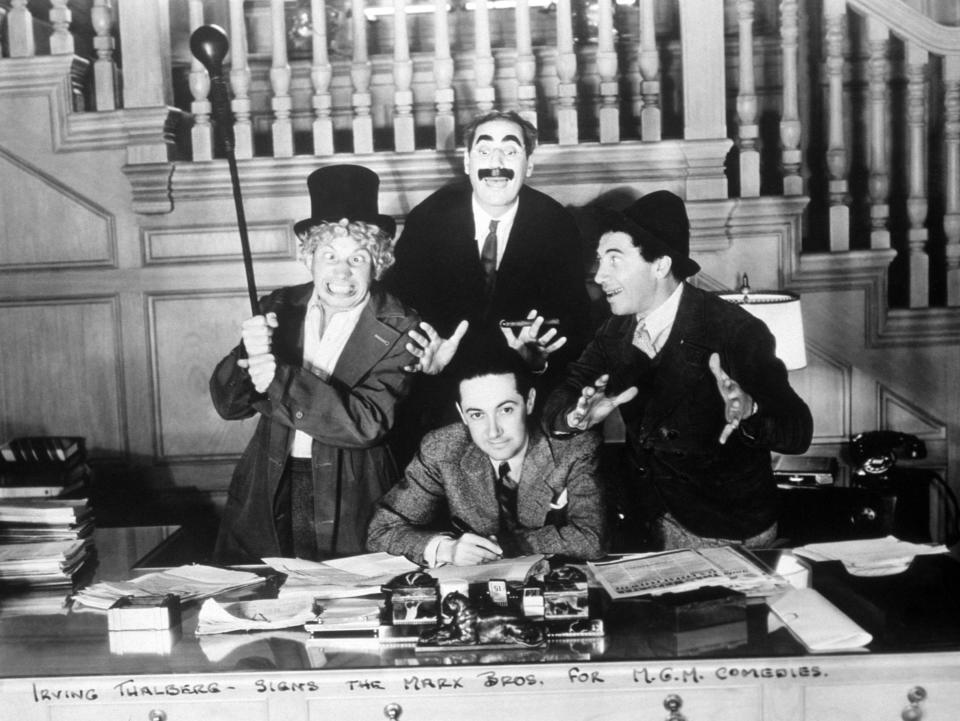
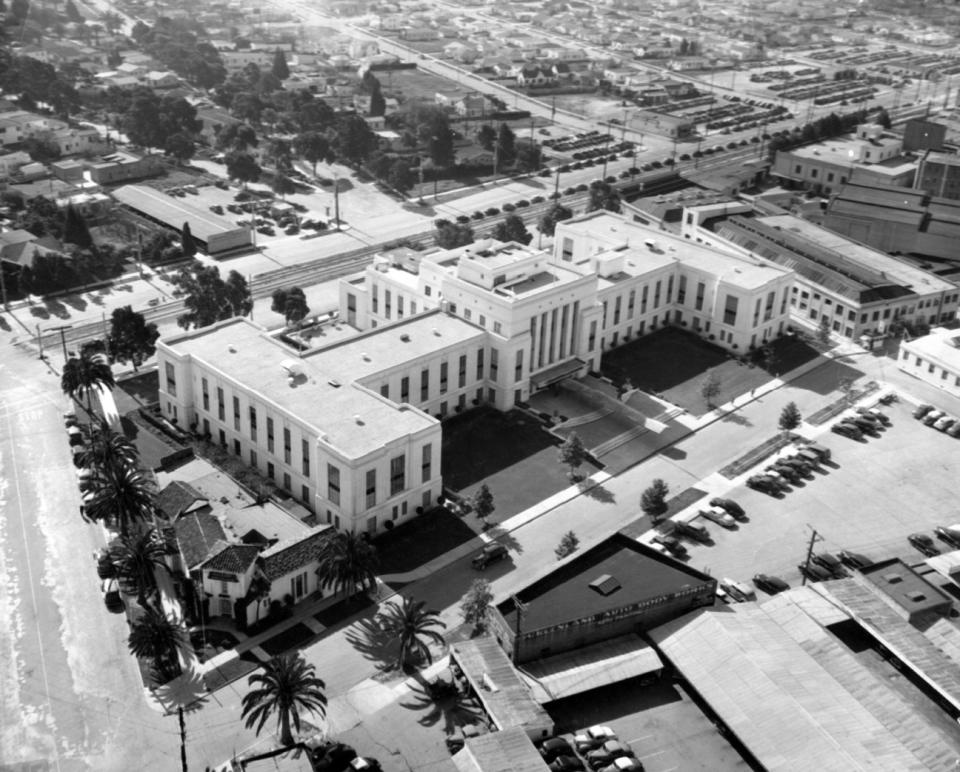
The Culver City studio, founded by Thomas Ince and home of Goldwyn films since 1919, housed 2,500 employees, and in 1924 was expected to film 18,000 miles of celluloid across its 10 stages. Stage six was said to have been the largest in the world at the time, covering an acre and a half. MGM was one of the first massive backlots, complete with temporary buildings and permanent sets such as “New York Street” and “Russian Street,” each designed to invoke places around the world while filming at home in Culver City. In April 1924, the Los Angeles Times put it bluntly, calling the merger the creation of “one huge studio.” Metro executive Joseph Schenck told the Times that “this merger gives assurance of greater prosperity in the industry.” “Get ready for a lot of work,” he told his employees, “We are going to make more pictures and better pictures.” However, Schenck clarified that “better pictures do not necessarily mean bigger pictures.”
Despite Schenck’s measured tone on larger productions, the MGM lot was primed for big things. Marcus Loew had his own ideas about what would define their studio and told the press that it was about to create “the greatest motion picture of all time” in Ben-Hur: A Tale of the Christ (1925). While the studio flirted with location filming in Italy and Catalina Island, key scenes were filmed on the MGM lot, including the iconic chariot race. The day of filming the famous sequence, director Fred Niblo grabbed his megaphone for the 9 a.m. call where 10,000 extras gathered at the Colosseum. Niblo directed from a tower, 100 feet off the ground, where he organized 42 cameras. The director could signal buglers who informed chariot teams when to start. MGM even chartered an airplane to film aerial footage. Ben-Hur was certainly one of the most extravagant films of the silent era and a testament to the potential of the medium’s ability to capture larger-than-life scenes.
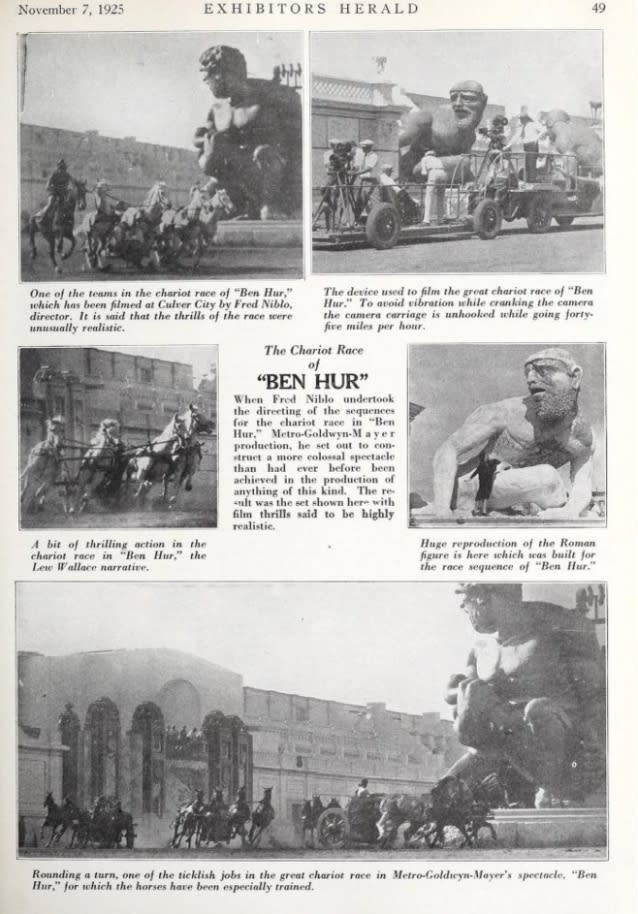
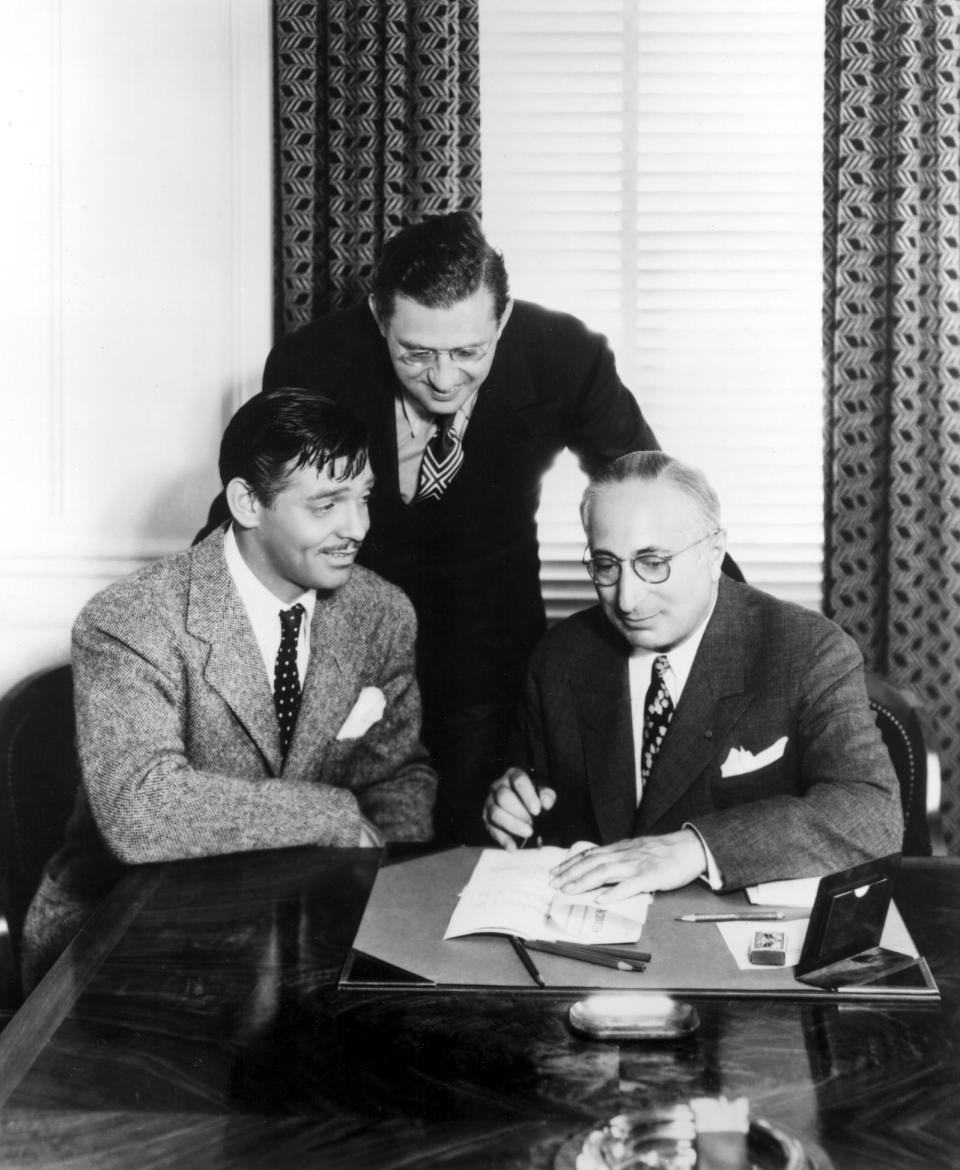
The goal of the Metro, Goldwyn and Mayer partnership was to eliminate production overlap between the companies, pooling resources to make better films and improve service with exhibitors. Over half of MGM’s first films were finished ahead of schedule. Loew’s theaters, the largest ownership in the country, was a surefire way to guarantee return on product from three companies that merged. “Great stars have been joined under one banner,” read Marcus Loew’s 1924 statement, “we believe unreservedly that henceforth the exhibitors’ most powerful and dependable source of picture supply is Metro-Goldwyn.” The Exhibitors Trade Review agreed, noting that the combination of Goldwyn’s lot and Loew’s theaters makes for the “strongest unit in [the] picture industry.” The biggest key to success was not just the machinery that was put in place, but the mind to run it — Louis B. Mayer.
The face of every studio, despite having more powerful bosses above him, was the production boss. Warner’s had the dapper Jack Warner, Universal had the astute Carl Laemmle, Fox still had its enigmatic founder William Fox, Columbia had the much feared Harry Cohn, and MGM’s long-serving Louis B. Mayer made an indelible mark on the evolution of movies and entertainment. Over the years chronicling Hollywood history, I’ve been delightfully acquainted with Alicia Mayer, the great grandniece of Louis. Mayer came to the United States from New Brunswick when he was 2 years old: a Jewish immigrant, like most of Hollywood’s founding fathers.
Alicia recently reflected about Louis, over email, that she’d been thinking, “How truly remarkable it is that coming from an observant Jewish household, my great uncle would not have been exposed to anything resembling entertainment as a child (likely the only singing he heard was in synagogue). He likely saw his first theatre show or vaudeville program only after he left home as a young man, probably when he left Saint John, New Brunswick and went to Boston. Whatever he experienced, it seemed to have unlocked something in him that was both awe-inspiring and a possible business opportunity.”
Alicia has long been the keeper of the flame for the family history connected to Mayer and MGM, along with legendary biographer Scott Eyman, who penned his own treatise on Mayer and the kingdom he watched over. Alicia maintains that her great uncle was “deeply focused he was on getting the best people and getting the most out of them.” Mayer and his sister Ida Mayer Cummings developed “a rich civic life that included supporting large scale Jewish community initiatives and events. On this topic, it’s fun to think about the Three Amigos, who in this case are Mary Pickford, LB Mayer and Ida, all working hard to pull in the massive funds needed to build whole campuses for the Jewish Home for the Aged (JHA).”
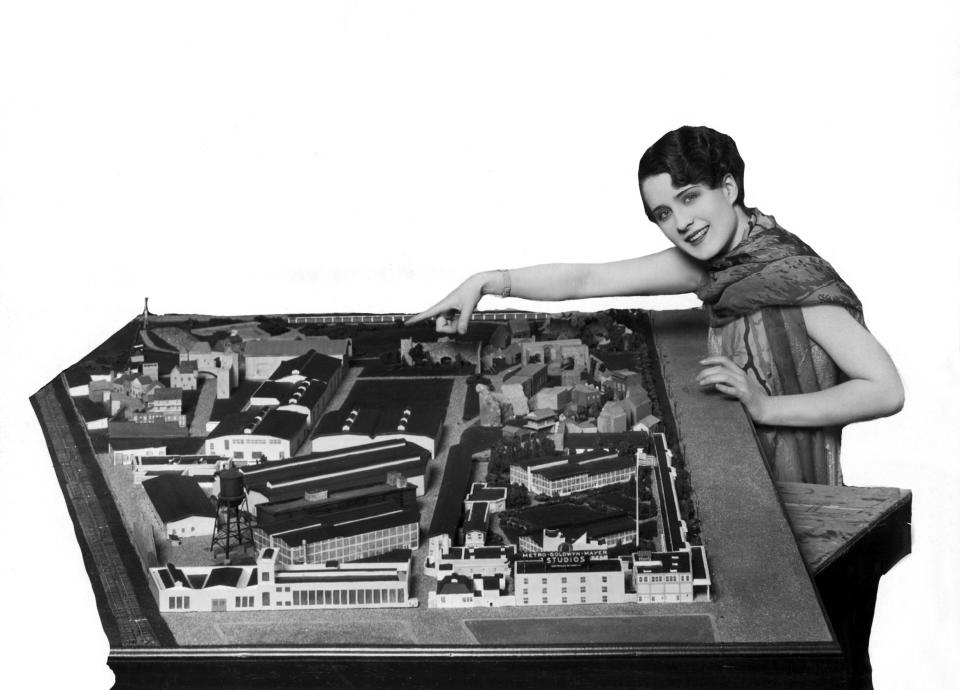
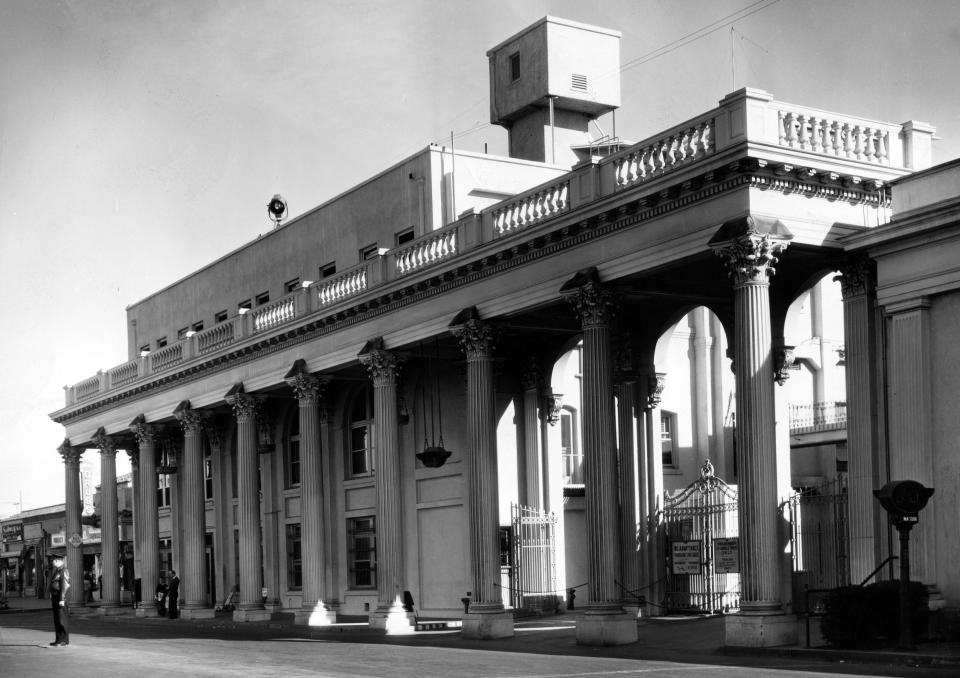
From the start, Mayer knew he could not make a great production outfit on his own. This is why he poached Thalberg who, along with Harry Rapf would make MGM’s production unit an industry juggernaut. 1924, the year the deal was sealed, saw some great and stories films from MGM. Among them was Buster Keaton’s delightful silent comedy Sherlock Jr., which just screened with live musical accompaniment to a packed audience a full 100 years later at the TCM Film Festival in Hollywood. That year also saw the storied production of Erich von Stroheim’s Greed. The first cut of the film was eight hours long, which studio executives were contractually obligated to watch in full before cutting ensued, much to von Stroheim’s dismay. Movies like Ben-Hur, other the other hand, showed audiences they had not yet seen the full potential of movies. MGM led from the top and pushed the industry forward from day one.
As the filmed 1925 studio tour boasted, MGM “actually pays people to engage in this interesting work, not with California sunshine and promises, but in cold hard dollars and cents.” Viewers can still watch the 30-minute studio tour from 1925 to grasp the lot’s magistral beauty. Hollywood was still just a place then, well on its way to becoming an idea that would inspire generations of artists to join the movie business. There were the days when MGM was filling its roster with major stars like Norma Shearer, John Gilbert, Buster Keaton, Marion Davies Roman Novarro, Lon Chaney and many others. Fifty years later the studio would be demolished, and important architectural artifacts lost forever, but one can never take away the joy MGM films have brought to countless audiences. What MGM established in 1924 helped solidify a machinery that continues a century later.
Best of The Hollywood Reporter
Meet the World Builders: Hollywood's Top Physical Production Executives of 2023
Men in Blazers, Hollywood’s Favorite Soccer Podcast, Aims for a Global Empire

